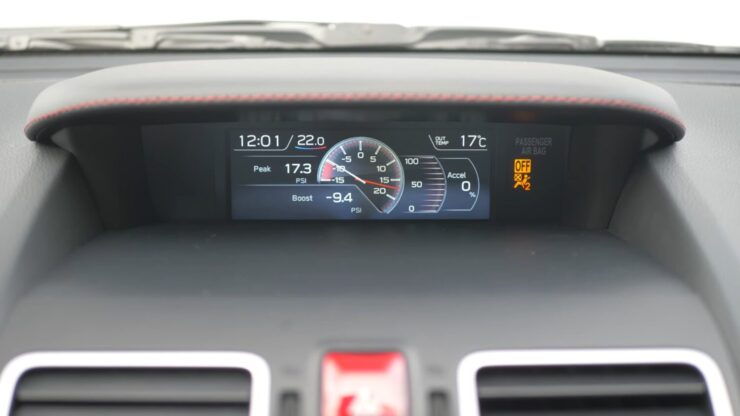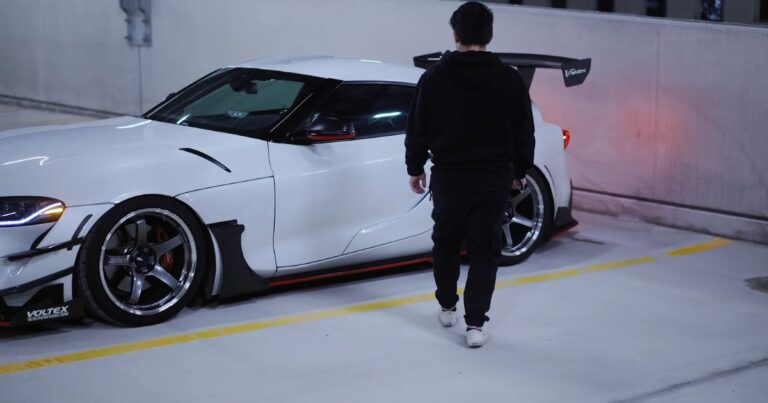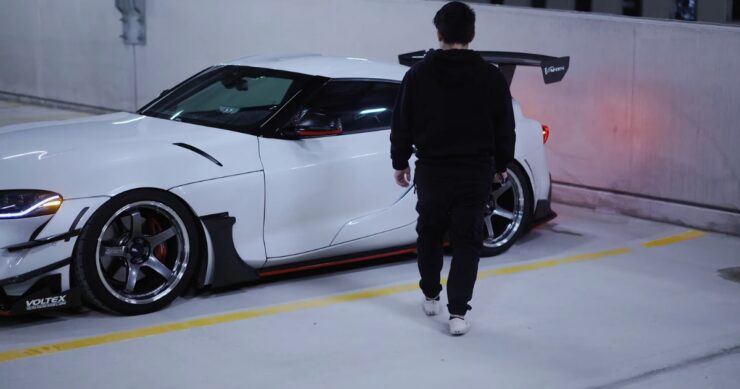Subaru Tecnica International, commonly known as STI, is more than just a badge on a Subaru car. It represents a legacy of performance, precision, and passion.
Within the automotive community, the STI badge is synonymous with high performance and is highly revered. It’s not just about speed and power; it’s about the meticulous engineering and the thrill of driving a car that’s been crafted for enthusiasts by enthusiasts.
Fun Fact: STI was established in 1988, but did you know that one of its first activities was setting a world record for 100,000 km endurance driving using three modified Subaru Legacy RS sedans?
The Origin of STI
Subaru Tecnica International, was previously known as Fuji Heavy Industries. The primary goal? To promote Subaru’s performance-oriented identity and take over all of Subaru’s motorsport activities.
STI was the brainchild of Noriyuki Koseki and Ryuichiro Kuze. Before STI’s inception, Koseki had been involved in rallying Subarus, and his passion for motorsport played a pivotal role in the foundation of STI.
The division quickly became known for its involvement in the World Rally Championship (WRC), partnering with Prodrive of the UK to prepare vehicles for the Subaru World Rally Team.
Pro Tip: If you’re ever in Japan, consider visiting STI’s headquarters located in Osawa, Mitaka, Tokyo. It’s a haven for Subaru enthusiasts!
STI as a Performance Brand
STI isn’t just a subsidiary; it’s the heart and soul of Subaru’s performance lineup. When you see an STI badge on a Subaru, you know you’re looking at a vehicle that’s been enhanced in every possible way for maximum performance.
From the engine to the suspension, from the aerodynamics to the interior, every aspect of an STI model is optimized for performance. These vehicles are not just about raw power; they’re about delivering a holistic driving experience that’s both exhilarating and precise.
Interesting Fact: STI models often come with unique features like a driver-controlled center differential (DCCD), specialized turbochargers, and lightweight alloy wheels from brands like BBS.

Subaru STI Models
Over the years, Subaru, with the expertise of STI, has produced a range of high-performance models that have become iconic in the automotive world. The journey began with the Subaru Legacy RS, a performance model that was a precursor to many STI models.
However, the most iconic and recognized STI model globally is undoubtedly the Subaru Impreza WRX STI. This car, with its distinctive hood scoop, large rear wing, and aggressive stance, has become a symbol of Subaru’s performance heritage. Over the years, the WRX STI has evolved, with each iteration bringing in more power, better handling, and advanced technologies.
Another notable model is the Subaru BRZ tS, which, while not as powerful as the WRX STI, offers a pure and engaging driving experience.
Did You Know: The “WRX” in Subaru Impreza WRX STI stands for “World Rally eXperimental.”
Racing and Motorsport Involvement
Subaru’s STI division is no stranger to the world of motorsport. Historically, STI, in collaboration with Prodrive from the UK, specialized in preparing vehicles for the Subaru World Rally Team, which competed in the World Rally Championship (WRC).
This partnership began in earnest in 1988, with Subaru aiming to bolster its performance-driven identity. Subaru’s involvement in the WRC dates back to 1980, but it wasn’t until STI’s inception in 1988 that they began to see significant success.
With the introduction of the Prodrive-developed Legacy RS in the 1990 WRC season, Subaru’s fortunes began to change. By 1993, the Legacy RS secured its first individual WRC race win at the Rally New Zealand.
Fun Fact: One of STI’s early achievements was setting a world record for 100,000 km endurance driving in January 1989, using three modified Subaru Legacy RS sedans, averaging an impressive speed of 223.345 km/h.
Notable STI Technologies

STI models are renowned for their advanced technologies, which significantly enhance the performance and handling of Subaru vehicles. For instance, the Legacy RS, developed in collaboration with Prodrive in 1989, was a performance model that boasted 220 PS, a five-speed gearbox, and weighed just over 2,600 pounds.
It was designed to meet FIA Group A racing requirements. Another notable technology is the 2.0-liter EJ20 turbo engine, which was used in the record-setting Legacy RS sedans for the endurance drive. STI’s modifications to these cars included tuning the suspension and improving aerodynamics, showcasing their commitment to performance and innovation.
Pro Tip: When considering an STI model, it’s essential to understand the advanced technologies that come with it. These technologies not only enhance performance but also ensure a smoother and more enjoyable driving experience.
STI Enthusiast Community
The STI enthusiast community is a passionate group of individuals who share a deep appreciation for Subaru’s performance-oriented vehicles. This community is known for its aftermarket support, with numerous modifications available for STI owners to further enhance their vehicles.
From car meets to online forums, STI enthusiasts come together to share their experiences, knowledge, and passion for these high-performance vehicles. The community’s dedication is evident in the numerous events, races, and gatherings held worldwide, celebrating the legacy and future of STI.
Interesting Fact: The STI community is so dedicated that limited-production models, like the Impreza 22B-STI Version, reportedly sold out in just 30 minutes!
Future of STI
Subaru continues to invest in the future of STI. At the 2022 Tokyo Auto Salon, Subaru unveiled the STI E-RA Concept, an all-wheel-drive two-seat racing car developed by STI. This concept car is equipped with a carbon fiber body and four electric motors, one at each wheel, allowing for torque vectoring by varying the output of each motor.
With a combined maximum power output of 800 kW (1,073 hp), this concept showcases Subaru’s commitment to innovation and performance. Given that this car is designed to meet the requirements of the FIA Electric GT Championship, which is set to debut in 2024, there’s much speculation about STI’s future involvement in motorsport.
Did You Know? The STI E-RA Concept’s electric motors were developed and manufactured by Yamaha Motor Company, showcasing a collaboration between two giants in the automotive and motorsport world.

FAQ
What is the difference between the Subaru WRX and the STI?
While both the WRX and STI are performance-oriented models from Subaru, they have distinct differences. The STI generally offers more power, a more rigid chassis, and a superior transmission, especially for those who plan on tracking their car. The STI also has features like 3 differentials, including a mechanical limited-slip diff. However, it’s essential to test drive both models to understand their unique driving experiences.
How should I maintain my Subaru STI?
Regular maintenance is crucial for the longevity and performance of your STI. It’s recommended to change the oil every 3,000 to 5,000 miles using 5W30 Synthetic oil or 5W40 in some areas. Avoid using Mobile One oil. Always use the OEM oil filter and oil plug gasket. Regularly check all fluid levels in the engine bay and be on the lookout for any unusual leaks or foaming from the oil or radiator.
What should I know about modifying my Subaru STI?
While the Subaru STI is a performance car, it’s sensitive to modifications. Any power-train modifications typically require an immediate tune. Driving without a proper tune, even for short distances, can be harmful. If you’re considering modifications, it’s advised to consult with a reputable tuner in your area. Some safe modifications include catback exhausts and axlebacks, which don’t risk engine damage or void warranties.
What is the DCCD in the Subaru STI?
DCCD stands for “Driver Controlled Center Differential.” It allows the driver to control the torque distribution bias, which is particularly useful on loose surfaces. It’s essential not to lock the differential on dry pavement as it can damage the car. In most scenarios, leaving the DCCD in “Auto” mode is recommended, as the car’s system knows how to adjust best.
Conclusion
The Subaru STI is more than just a car; it’s a testament to Subaru’s commitment to performance, innovation, and racing heritage. Over the years, STI has evolved, pushing boundaries and setting new standards in the automotive world.
From its origins as a performance brand to its undeniable presence in motorsport, STI has carved a niche for itself, backed by a passionate community of enthusiasts. As we look to the future, one thing remains certain: the STI legacy will continue to inspire and excite generations of car lovers.













